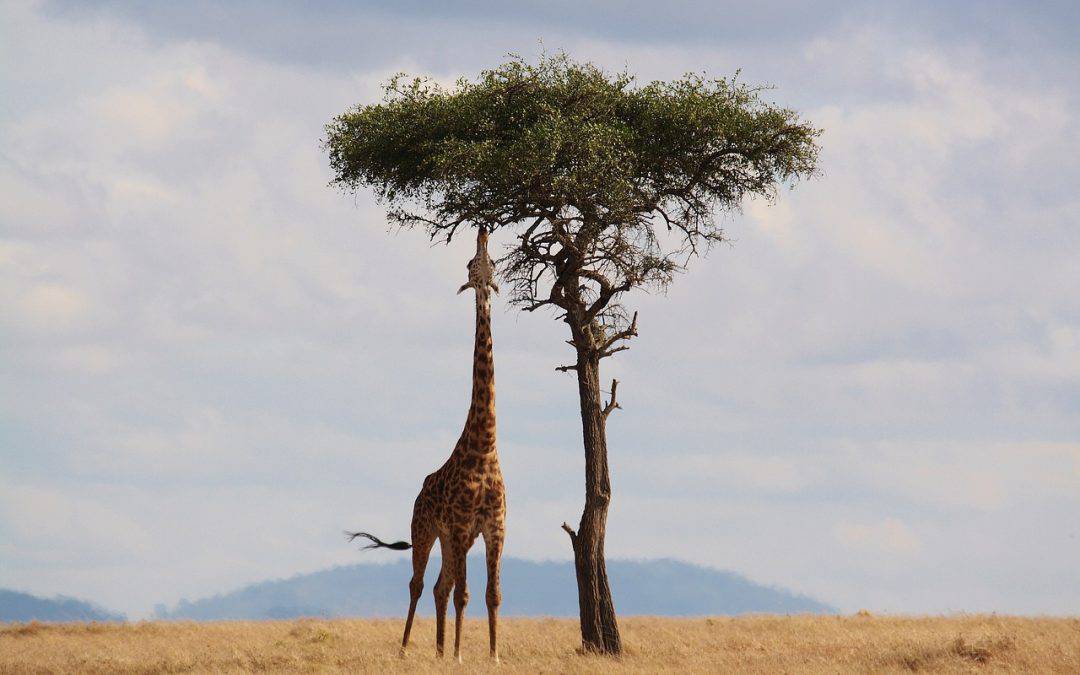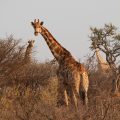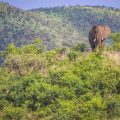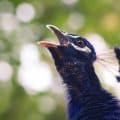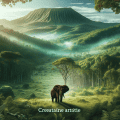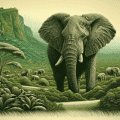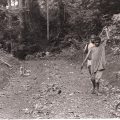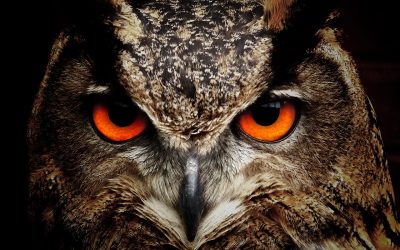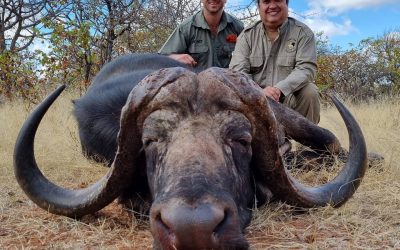So you’re an avid nature lover and have always dreamt of going on a safari in Africa, but one thing has been holding you back – the idea of hunting animals with a weapon. Well, here’s some good news for you: there is an alternative! You can actually embark on a thrilling photographic safari instead, where your weapon of choice is a camera, not a rifle. This article explores the concept of hunting through a lens rather than a scope and offers a fascinating glimpse into how wildlife enthusiasts are enjoying the beauty of Africa while promoting conservation efforts.
Understanding Wildlife Conservation
Importance of wildlife conservation in Africa
Wildlife conservation in Africa is of paramount importance due to the continent’s rich biodiversity and unique ecosystems. Africa is home to a vast array of iconic animal species such as elephants, rhinos, lions, and giraffes, which capture the imagination of people worldwide. Protecting these wildlife populations is crucial for maintaining a balanced and healthy ecosystem, as well as preserving Africa’s cultural heritage.
Conserving wildlife in Africa also has significant ecological, economic, and social benefits. Wildlife tourism contributes to local economies, creating jobs and supporting communities. The presence of thriving wildlife populations attracts tourists from all over the world, generating revenue that can be invested in conservation efforts. Additionally, the conservation of wildlife helps to preserve natural habitats, ensuring the survival of not only the animals but also the plants and other organisms that rely on these ecosystems.
Threats to wildlife populations
Despite its importance, wildlife in Africa faces numerous threats that endanger their survival. Poaching remains a grave concern, driven by illegal wildlife trade and demand for animal parts for traditional medicine or luxury goods. Habitat loss due to human activities such as agriculture, deforestation, and urbanization also threatens wildlife populations. Climate change further exacerbates the challenges faced by wildlife, impacting their habitats, food sources, and migration patterns.
Role of hunting in conservation
Traditionally, hunting has been viewed as a threat to wildlife conservation. However, when practiced responsibly and sustainably, hunting can play a significant role in wildlife conservation efforts. Sustainable hunting practices, such as regulated trophy hunting, can generate revenue that is reinvested in conservation programs, habitat preservation, and anti-poaching initiatives. Additionally, hunting can help maintain balanced population sizes, preventing overpopulation that could lead to ecological imbalances.
Adopting camera-based hunting as an alternative
To address concerns surrounding traditional hunting practices, camera-based hunting offers a viable alternative that allows individuals to engage with wildlife without causing harm. Camera-based hunting, also known as wildlife photography, enables enthusiasts to capture breathtaking images of animals in their natural habitats while respecting their well-being. By embracing camera-based hunting, individuals contribute to wildlife conservation efforts by raising awareness and promoting the beauty and importance of these species.
Camera-based Hunting Explained
What is camera-based hunting?
Camera-based hunting, as the name suggests, involves using a camera instead of a weapon to “hunt” for wildlife. Rather than seeking to kill or harm animals, camera-based hunters focus on capturing images of animals in their natural environments. The ultimate goal is to observe and document wildlife behavior, preserving these moments through the art of photography.
How it differs from traditional hunting
The fundamental difference between camera-based hunting and traditional hunting lies in the objective and outcome. Traditional hunting involves killing animals for various purposes, such as food, trophies, or population control. In contrast, camera-based hunting aims to capture images that serve as a testament to the natural beauty and behavior of wildlife. Instead of taking a life, camera-based hunters strive to preserve these moments and share them with others.
Equipment required for camera-based hunting
Camera-based hunting requires specific equipment to effectively capture wildlife photographs. The most crucial piece of equipment is, of course, a reliable camera. A digital single-lens reflex (DSLR) camera or a mirrorless camera is commonly used for wildlife photography due to their versatility and ability to capture high-quality images. Other essential equipment includes telephoto lenses, tripods or monopods for stability, and memory cards with ample storage capacity to capture a large number of images.
Types of cameras used in wildlife photography
Several types of cameras are commonly used in wildlife photography, each with its unique advantages and features. DSLR cameras are popular due to their versatility, interchangeable lenses, and excellent image quality. Mirrorless cameras, on the other hand, offer a more compact and lightweight alternative while still providing high-quality images. Advanced point-and-shoot cameras with superzoom capabilities are also suitable for beginners or photographers who prefer a more portable option.
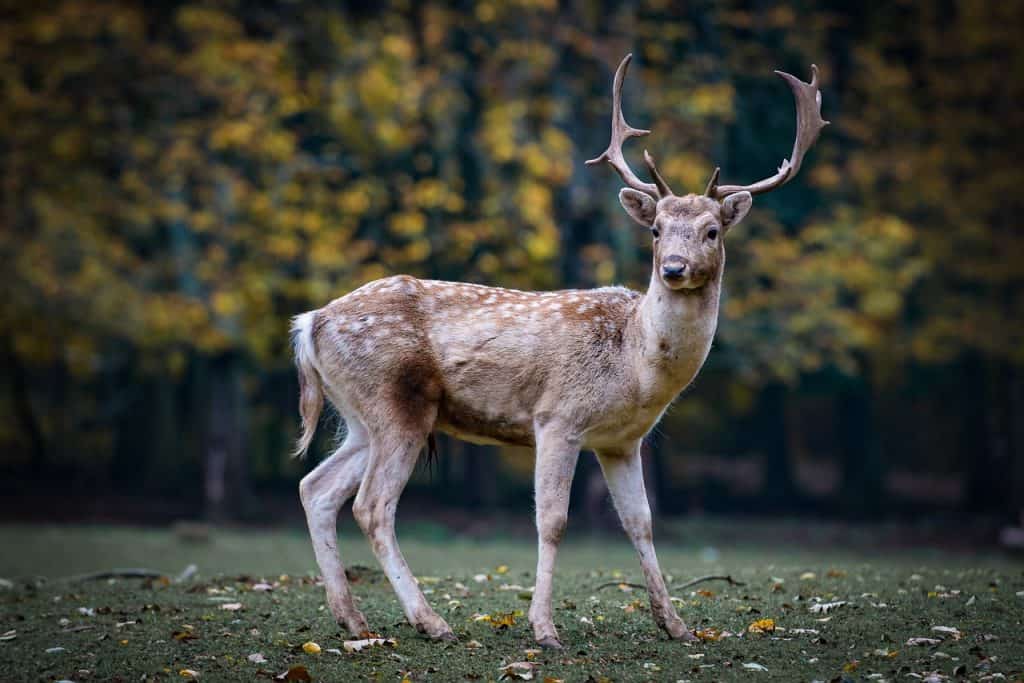
Benefits of Camera-based Hunting
Preservation of wildlife
One of the significant benefits of camera-based hunting is the preservation of wildlife populations. By immersing themselves in the natural habitats of animals, camera-based hunters have an opportunity to capture images that depict the beauty and importance of these species. These photographs provide a medium for raising awareness, educating the public, and encouraging conservation efforts to protect these animals and their habitats.
Reduced ecological impact
Unlike traditional hunting, camera-based hunting has minimal ecological impact. Wildlife photographers strive to minimize their presence and interference when capturing images, ensuring that animals are not unnecessarily disturbed or stressed. By adhering to ethical guidelines, camera-based hunters contribute to the preservation of natural habitats and the overall well-being of wildlife populations.
Sustainable wildlife management
Camera-based hunting supports the principles of sustainable wildlife management. By embracing photography as a means of interacting with wildlife, individuals contribute to the conservation of species without compromising their long-term survival. Sustainable management practices, such as regulated hunting quotas and protected areas, help maintain balanced population sizes and preserve biodiversity.
Economic benefits of wildlife tourism
Camera-based hunting, in the form of wildlife photography, has significant economic benefits for local communities. The popularity of wildlife tourism drives the demand for accommodations, transportation, and other services, creating employment opportunities and supporting local businesses. The revenue generated from wildlife tourism can be reinvested in conservation initiatives, empowering communities to actively participate in wildlife conservation and promoting sustainable livelihoods.
Challenges and Limitations
Adapting to wildlife behavior
Capturing compelling wildlife photographs requires an understanding of animal behavior and the ability to adapt to unpredictable situations. Patience and an intimate knowledge of the target species are essential for selecting the right moments to photograph. Wildlife photographers must be prepared to spend long hours observing and waiting for the perfect shot.
Capturing the perfect shot
Photographing wildlife presents its own set of challenges, as animals rarely pose according to our expectations. Camera-based hunters often have limited control over lighting conditions, weather, and the movements of their subjects. Overcoming these challenges requires skill, experience, and the ability to take advantage of fleeting moments to capture remarkable images.
Safety concerns for photographers
Camera-based hunting comes with inherent risks, especially when working with powerful or potentially dangerous animals. Wildlife photographers must prioritize their safety by maintaining a safe distance and respecting the natural boundaries of wildlife. Understanding animal behavior and working alongside experienced guides can help mitigate potential risks.
Accessibility to wildlife habitats
Certain wildlife habitats may be located in remote or protected areas with limited accessibility. Accessing these locations may require permits, specialized equipment, or the assistance of local guides. While these challenges can present logistical hurdles, they can also contribute to the preservation of these habitats by reducing human impact and maintaining the integrity of the ecosystem.
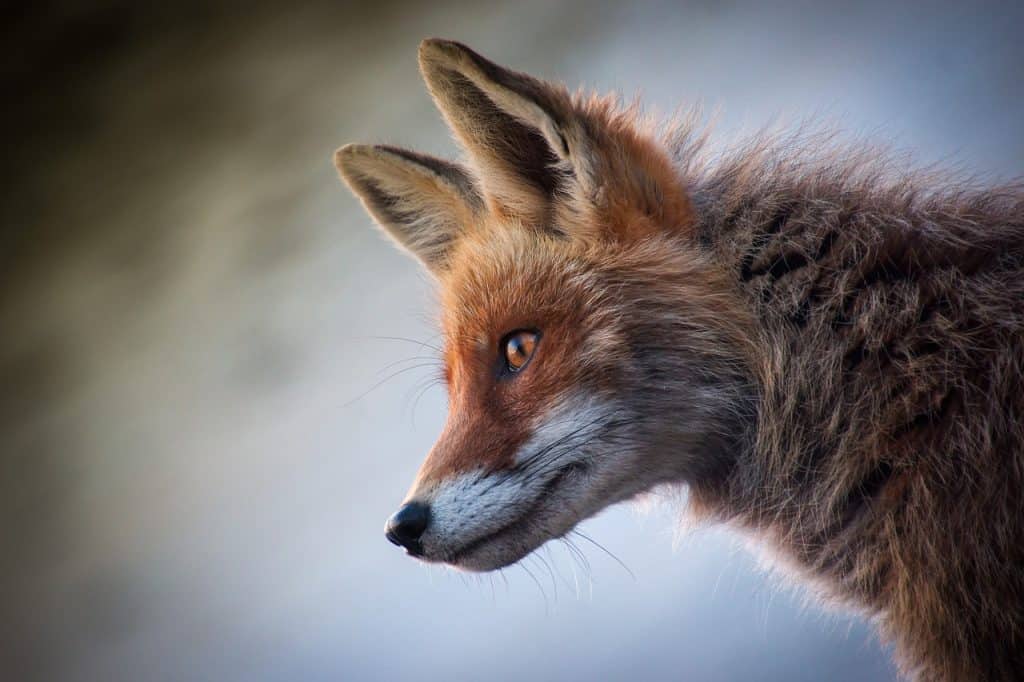
Ethical Considerations
Ethical issues in traditional hunting
Traditional hunting practices often raise ethical concerns, particularly regarding animal welfare and conservation. Unregulated hunting, illegal poaching, and the use of destructive methods can have detrimental effects on wildlife populations and ecosystems. The unsustainable hunting of endangered species also poses a significant threat to their survival.
Responsible photography and respect for animals
Camera-based hunting presents an opportunity to engage with wildlife in a responsible and respectful manner. Wildlife photographers must prioritize the welfare of the animals they encounter, ensuring their actions do not cause distress or harm. Respecting natural boundaries, maintaining a safe distance, and avoiding disruptive behavior are crucial in promoting ethical photography practices.
Avoiding intrusive or harmful behavior
When photographing wildlife, it is essential to avoid intrusive or harmful behaviors that may disrupt the animals’ natural behavior or habitat. Examples include approaching too closely, using flash photography in sensitive environments, or altering natural settings for the sake of capturing a particular shot. Respecting the animals’ welfare is paramount.
Ethics of wildlife tourism
Camera-based hunting is closely tied to wildlife tourism, which also raises ethical considerations. Responsible wildlife tourism prioritizes the well-being of animals, respects local communities, and aims for a minimal ecological footprint. Tourists should support operators and organizations that adhere to ethical guidelines, contribute to community-based conservation initiatives, and prioritize the long-term sustainability of wildlife populations and habitats.
Engaging with Local Communities
Collaborating with local guides
When embarking on camera-based hunting expeditions, collaborating with local guides can enhance the experience and ensure a deeper understanding of the environment and wildlife behavior. Local guides possess invaluable knowledge of the area, enabling visitors to make the most of their photography opportunities while respecting the needs and sensitivities of the local communities.
Supporting community-based conservation initiatives
Engaging with local communities and supporting their efforts in wildlife conservation is vital for the long-term sustainability of these initiatives. Promoting community-based conservation initiatives ensures that local communities are actively involved in decision-making processes and benefit economically from conservation efforts. By supporting these initiatives, camera-based hunters contribute to the preservation of wildlife habitats and the empowerment of local communities.
Educating communities about wildlife conservation
Educating local communities about the importance of wildlife conservation is crucial for achieving long-term sustainability. Camera-based hunters can play a role in raising awareness and delivering educational programs that highlight the value of wildlife and the benefits of responsible wildlife tourism. By fostering a sense of pride and ownership over the natural resources, communities can become essential allies in conservation efforts.
Promoting sustainable livelihoods
Camera-based hunting, combined with responsible tourism practices, can promote sustainable livelihoods for local communities. By generating income through wildlife tourism, communities can diversify their economies, reducing dependency on unsustainable practices such as poaching or habitat destruction. Supporting sustainable livelihoods ensures the long-term success of conservation efforts and benefits both wildlife and local communities.
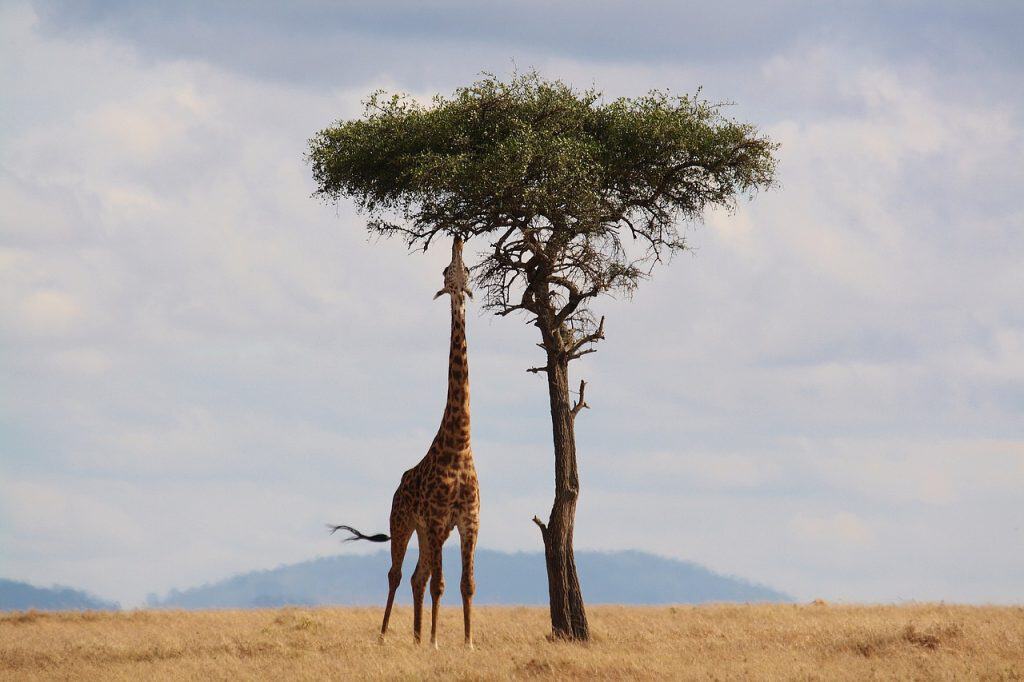
Successful Camera-based Hunting Destinations
Maasai Mara National Reserve, Kenya
The Maasai Mara National Reserve in Kenya is renowned for its extraordinary wildlife and serves as a popular camera-based hunting destination. Home to the famous Great Migration, this vast savannah landscape offers unparalleled opportunities to witness and photograph a wide variety of wildlife. Visitors can capture images of migrating wildebeests, lions, elephants, and many other iconic African species.
Serengeti National Park, Tanzania
Another iconic camera-based hunting destination is the Serengeti National Park in Tanzania. This vast conservation area is famous for its annual wildebeest migration and is teeming with diverse wildlife. Photographers can capture breathtaking images of predators in action, such as lions, cheetahs, and leopards, as well as large herbivores like zebras and giraffes.
Okavango Delta, Botswana
The Okavango Delta in Botswana offers a unique and picturesque setting for camera-based hunting. This pristine wetland ecosystem is home to a rich diversity of wildlife, including elephants, hippos, crocodiles, and a multitude of bird species. Exploring the delta by traditional mokoro canoe or on foot provides ample opportunities to capture stunning images that showcase the delta’s natural beauty.
Kruger National Park, South Africa
Kruger National Park in South Africa is one of the continent’s premier camera-based hunting destinations. Spanning over a vast area, the park is home to an incredible array of wildlife, including all of the iconic Big Five species – lions, elephants, rhinos, leopards, and buffalos. With excellent infrastructure and a well-established network of game drives, photographers have the opportunity to capture remarkable images in this world-renowned wildlife reserve.
Tips for Camera-based Hunting
Research and plan your trip
Before embarking on a camera-based hunting trip, thorough research and planning are essential. Familiarize yourself with the target wildlife species, their behavior, and the best locations and seasons for photography. Gain a good understanding of the necessary permits, regulations, and local customs to ensure a smooth and enjoyable experience.
Focus on wildlife habitats and migration patterns
To maximize your chances of capturing remarkable images, focus on wildlife habitats and migration patterns. These locations provide opportunities for observing and photographing animals in their natural environments, engaging in their typical behaviors. Study migration patterns to plan your travels accordingly and position yourself for unique photography opportunities.
Patience and observation skills
Photographing wildlife requires patience and keen observation skills. Spend time observing animals’ behavior, learning their habits, and anticipating potential moments to capture compelling photographs. Patience is key, as wildlife sightings and photographable moments may be sporadic and unpredictable.
Respect for wildlife and their natural behavior
Respecting wildlife and their natural behavior is paramount in camera-based hunting. Avoid disturbing or interfering with animals’ natural routines and refrain from altering their habitats or surroundings. Allow animals to dictate their comfort level and maintain a respectful distance to capture images without causing distress or harm.
Photography Ethics and Techniques
Responsible use of camera flashes
When using camera flashes, it is crucial to be mindful of their impact on wildlife. Bright flashes can startle or disorient animals, potentially causing stress or adverse reactions. In sensitive environments, such as nesting areas or nocturnal habitats, it is advisable to refrain from using flash photography altogether. Instead, explore natural lighting techniques and capture images without disturbing the animals.
Capturing animals in their natural environment
The essence of wildlife photography lies in capturing animals in their natural environments, showcasing their beauty and behavior. Avoid staging or manipulating scenes to create artificial situations. Engage in patient observation, waiting for the right moments to capture images that truly reflect the animals’ natural habitats.
Understanding lighting and composition
Mastering lighting and composition techniques is crucial for capturing stunning wildlife photographs. Utilize natural lighting to your advantage, taking into consideration the time of day, weather conditions, and the direction of light. Experiment with different angles, perspectives, and focal lengths to create visually compelling compositions that highlight the subject and evoke emotions.
Post-processing and editing guidelines
Post-processing and editing photographs should be done with care and integrity. Enhancements should aim to improve the image while maintaining the authenticity and accuracy of the original scene. Avoid excessive manipulation that distorts the natural appearance of the animals or their surroundings. Ethical post-processing practices reflect a commitment to preserving the integrity of wildlife photography.
Conclusion
Camera-based hunting, in the form of wildlife photography, offers a compelling and ethical alternative to traditional hunting in Africa. By embracing camera-based hunting, individuals contribute to wildlife conservation efforts, raise awareness about the importance of biodiversity, and promote sustainable practices. Through responsible photography, respect for wildlife, and engagement with local communities, camera-based hunters play a crucial role in preserving Africa’s diverse and magnificent fauna. The adventures and encounters captured through the lens create lasting memories and inspire others to appreciate and protect the natural wonders of Africa.

